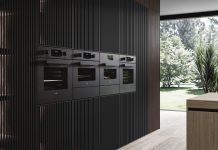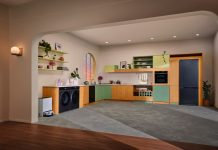 As smart and connected buildings are increasing in number – APPLiA explains -, so is stakeholders’ involvement in developing a Smart Readiness Indicator (SRI), as proposed in the revised Energy Performance for Buildings Directive (EPBD), that would enhance both the unlocking of potential flexibility in smart buildings as well as the uptake of smart technologies, including smart appliances. While this is still an open process, it is clear to APPLiA the need to state the practical implementation of the Indicator and the appliances under the scope of the measurement as first steps, so as to make the on-going work on Smart Appliances of support. “The added value of the Indicator – APPLiA said – would be that of adopting a European voluntary scheme, benefiting smart technologies and resulting in energy savings and improved comfort of buildings for occupants. An achievement that would give a new role to consumers when it comes to their smart energy systems. On a more practical level, discussion is still on-going on the methodology to use for the Indicator, being it a simplified, an expert assessment or an in-use smart building performance. Further consultation is happening also on the definition of the impact criteria, following a first technical report outlined by the study team consisting of eight benchmarks. On this point, to support a streamlined assessment, APPLiA has proposed a re-grouping of the criteria in 4 categories, being also in favour of an output score for single value or for category rather than an overall one, to ensure an optimal assessment for different buildings and end-users. Key to the SRI implementation is interoperability, where achievements have already been completed with existing solutions that should be taken into consideration while developing the Indicator. The joint work of APPLiA, EEBUS Initiative and Energy@home, as an example, put in place a demo of connected, differently-branded home appliances interacting with a home energy manager, making usage of a language based on SAREF, the Smart Appliances REFerence ontology, the common language for home appliances communication launched in 2015. SAREF represents a valuable and developed ontology in this field and its potential to be used in new domains, being them buildings, environment and smart cities, should not be missed out. The final report of the project is foreseen for the end of June 2020, allowing the time to develop a Smart Readiness Indicator that could bring an added value with valuable insights for building owners and occupants”.
As smart and connected buildings are increasing in number – APPLiA explains -, so is stakeholders’ involvement in developing a Smart Readiness Indicator (SRI), as proposed in the revised Energy Performance for Buildings Directive (EPBD), that would enhance both the unlocking of potential flexibility in smart buildings as well as the uptake of smart technologies, including smart appliances. While this is still an open process, it is clear to APPLiA the need to state the practical implementation of the Indicator and the appliances under the scope of the measurement as first steps, so as to make the on-going work on Smart Appliances of support. “The added value of the Indicator – APPLiA said – would be that of adopting a European voluntary scheme, benefiting smart technologies and resulting in energy savings and improved comfort of buildings for occupants. An achievement that would give a new role to consumers when it comes to their smart energy systems. On a more practical level, discussion is still on-going on the methodology to use for the Indicator, being it a simplified, an expert assessment or an in-use smart building performance. Further consultation is happening also on the definition of the impact criteria, following a first technical report outlined by the study team consisting of eight benchmarks. On this point, to support a streamlined assessment, APPLiA has proposed a re-grouping of the criteria in 4 categories, being also in favour of an output score for single value or for category rather than an overall one, to ensure an optimal assessment for different buildings and end-users. Key to the SRI implementation is interoperability, where achievements have already been completed with existing solutions that should be taken into consideration while developing the Indicator. The joint work of APPLiA, EEBUS Initiative and Energy@home, as an example, put in place a demo of connected, differently-branded home appliances interacting with a home energy manager, making usage of a language based on SAREF, the Smart Appliances REFerence ontology, the common language for home appliances communication launched in 2015. SAREF represents a valuable and developed ontology in this field and its potential to be used in new domains, being them buildings, environment and smart cities, should not be missed out. The final report of the project is foreseen for the end of June 2020, allowing the time to develop a Smart Readiness Indicator that could bring an added value with valuable insights for building owners and occupants”.



